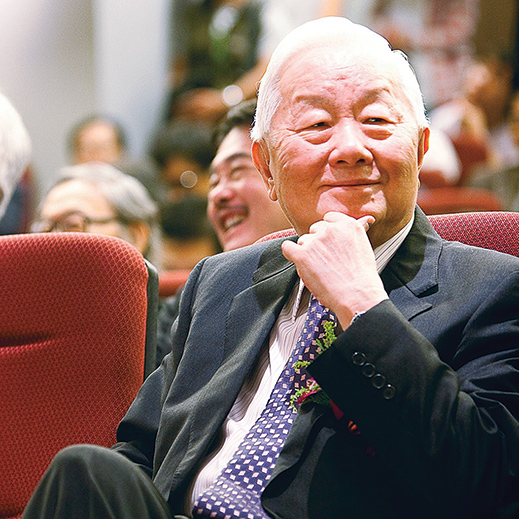Morris Chang ’52, SM ’53, ME ’55
Transforming the semiconductor industry.
When Morris Chang arrived at MIT in 1950, interdisciplinary thought was not a hot topic. But as he earned his degrees, Chang understood that combining multiple types of knowledge offered tremendous potential for solving problems. He has since used that strategy to effect fundamental change in the global semiconductor and electronics industries.
Growing up in China during an era of unrelenting conflict, Chang was interested in writing but took a more practical route by beginning a university program in banking in 1948. He was soon forced to flee to Hong Kong, where he and his father agreed that he should pursue science or engineering studies in the United States.
An uncle in Boston helped with school applications, steering Chang to Harvard. “He knew MIT was a special school and thought I was an uncertain kid,” he recalls. “He felt I should spend a year figuring out what to do.”
This story is only available to subscribers.
Don’t settle for half the story.
Get paywall-free access to technology news for the here and now.
Subscribe now
Already a subscriber?
Sign in
You’ve read all your free stories.
MIT Technology Review provides an
intelligent and independent filter for the
flood of information about technology.
Subscribe now
Already a subscriber?
Sign in
After his freshman year at Harvard, Chang transferred to MIT and declared Course II as his major. He immersed himself in fluid mechanics, heat transfer, and other fundamentals, working alongside impressive classmates and professors. “They were good teachers and good engineers,” he says. He particularly enjoyed general-education classes such as economics and history. “A liberal education is very helpful,” he says. “All disciplines are related, and you can only start to connect things when you understand the basics of several disciplines.”
Upon leaving MIT with three degrees in 1955, Chang found a home in the nascent semiconductor industry, where he learned solid-state physics through self-study and a helpful colleague at Sylvania before joining Texas Instruments in Dallas. He advanced quickly, earning a PhD at Stanford along the way. At TI, he won fame for his bold introduction of regular price cuts on integrated circuits, a strategy that made the company the era’s largest and most profitable chip maker and sparked industry-wide adoption of this practice.
Chang moved to Taiwan in the mid-1980s to lead the government’s Industrial Technology Research Institute. While evaluating economic-development opportunities, he recognized that chip design and production could be independent businesses. He launched Taiwan Semiconductor Manufacturing Company (TSMC), the first business devoted exclusively to semiconductor production.
By manufacturing chips that worked well in other companies’ products, TSMC paved the way for a new generation of companies focused on designing chips for specific market needs—a sector that now accounts for one-quarter of world semiconductor revenue. It’s now the world’s third-largest chip maker.
Chang is a life member emeritus of the MIT Corporation and has received honors including the Medal of Honor and Robert Noyce Medal from the Institute of Electrical and Electronics Engineers. He lives in Taiwan with his wife, Sophie, and continues to pursue a lifelong interest in music from the era of Bach to Mahler.
